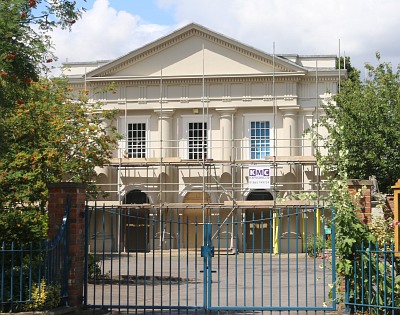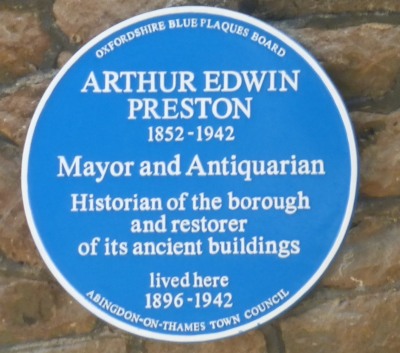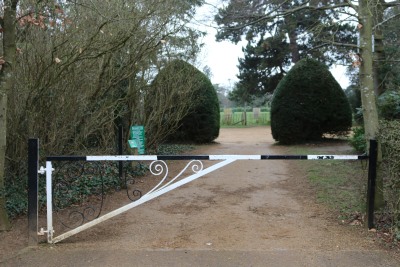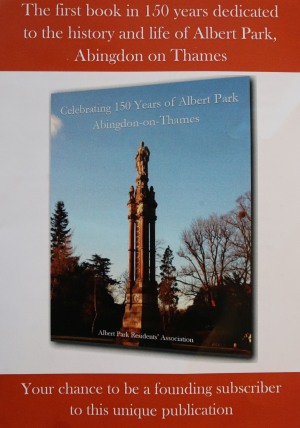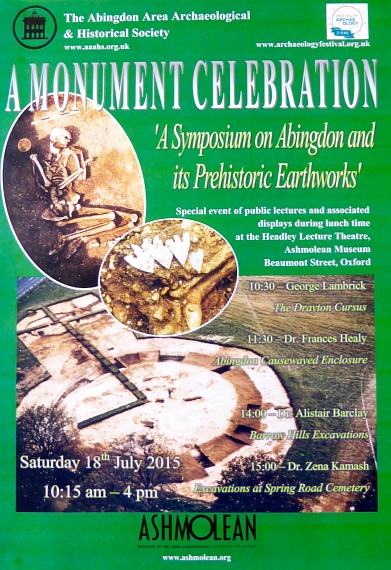
There will be an all day symposium on Saturday 18th July 2015 at the Ashmolean Museum in Oxford on ‘Abingdon and its Prehistoric Earthworks’.
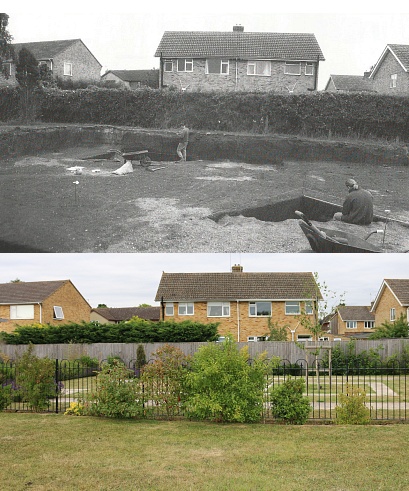
The final lecture by Dr Zena Kamash will be about discoveries at Spring Road Cemetery. The pictures above shows the site in 2000 during excavation, and in 2015 with the new Garden of Remembrance.
The cemetery was created from agricultural land in 1940, and during the early years so many ancient graves were being disturbed to create new graves that it was decided to do some proper excavations before all the evidence got lost.
The Abingdon Area Archaeological and Historical, in conjunction with the Ashmolean Museum, is making a contribution to the National Festival of Archaeology 2015 by holding this one day free event in the Headley Lecture Theatre, Ashmolean Museum.
The Full Programme:
10:15 Dr. Gill Hey: Introduction
10:30 George Lambrick: The Drayton Cursus and other Monuments in the Development of Prehistoric Ceremonial and Funerary Complexes in the Upper Thames Valley.
11.30 Dr. Frances Healy: A Brief Life: placing the Abingdon Causewayed Enclosure in Time.
12.30 Lunch Break.
Time to look round a display of finds in the Ashmolean reserve collections from Barrow Hills, the Abingdon Causewayed Enclosure and other sites of relevance to Abingdon.
14.00 Dr. Alistair Barclay: Barrow Hills Excavation: thirty years on.
15.00 Dr. Zena Kamash: Excavations at Spring Road Cemetery, a Bronze Age Pit Circle and other discoveries.

